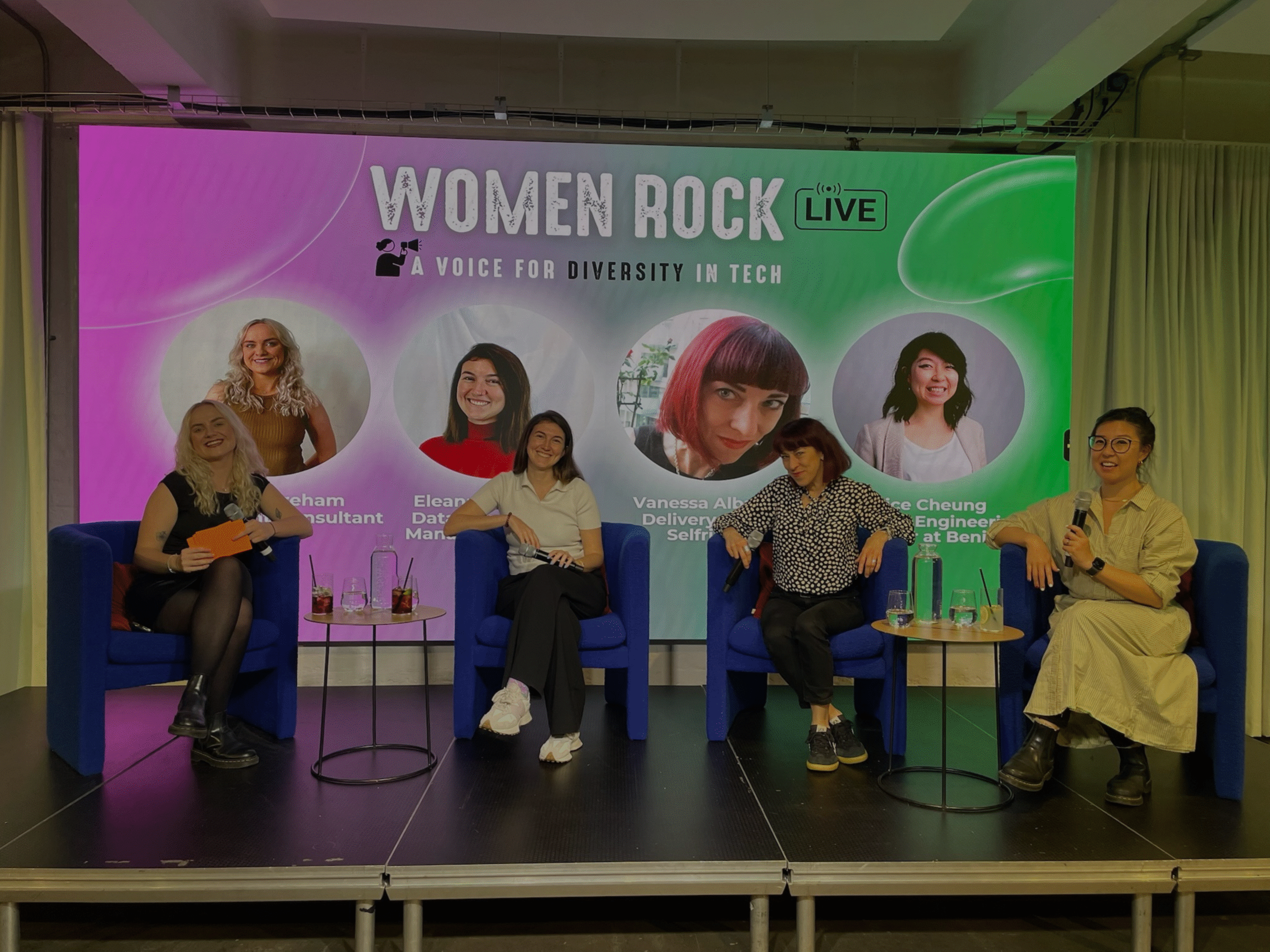Last month, we hosted our first Women Rock Live event at our London home, The Ministry.
Born from seven years of championing women and underrepresented talent in tech, the goal was simple: to create space for honest conversations about what workplace inclusion really looks like.
The panel featured three women who’ve each carved out their space in industries that still lean heavily male:
Vanessa Albarran, Delivery Lead at Selfridges, who’s seen everything from New York law firms to London tech teams and knows exactly how leadership styles have to evolve.
Eleana Sklaveniti, Data Engineering Manager at Apollo, who’s building safe spaces in one of the most traditional corners of tech: insurance.
And Alice Cheung, Software Engineering Manager at Benifex, who’s worked across finance and technology and isn’t afraid to call out the hard truths about representation and design bias.
It was an open, funny, sometimes uncomfortable conversation that ultimately circled back to the same question: what does leadership look like when it’s genuinely inclusive?
Here’s some of our key takeaways from the night.
1) Redefining leadership: calm > loud
The panel didn’t tiptoe around it – the “shouty sergeant” style of management still shows up in tech and finance.
Alice recalled how, under pressure to get a proposal in on time, a colleague once missed a submission deadline by a minute. “I knew what my old CEO would’ve done,” she said. “He’d have screamed.”
But she took a breath, stayed calm, and reassured her teammate instead. A few years later, that same person came back to thank her for handling it with kindness – proof that calm leadership sticks longer than fear does.
Vanessa’s line summed it up best: “Your response you can control, no matter how hard it is. You have to keep your calm and even tone. Nobody can shout against that.”
Rather than tone policing women, it’s about owning your composure so the message lands. When leaders show vulnerability, admit nerves, or simply model basic empathy, it gives everyone else permission to do the same.
As Eleana put it later in the discussion: “People were scared to say ‘I’m nervous’ or ‘I’m hormonal.’ Now I talk about it openly – and suddenly everyone else does too.”
Psychological safety isn’t about making everyone comfortable all the time. It’s about trust – the kind that lets people tell the truth, admit mistakes, and still want to come back tomorrow.
2) D&I goes beyond gender: the neurodiversity edge
Too often, conversations about diversity are limited. Vanessa challenged that. For her, neurodiversity isn’t a side topic – it’s one of the biggest untapped strengths in modern teams.
“You hear a lot less about it than gender or sexual diversity,” she said, before reading out a definition: ‘Someone who is neurodivergent behaves, thinks and learns differently compared to those who are neurotypical.’
She talked about working with colleagues with ADHD, dyslexia and autism, and how their different wiring actually drives better delivery. “They see things we’d never think of. They imagine all the weird permutations that make or break a website.”
It was practical too. At Selfridges, she explained, employees can tag their communication needs internally – things like ‘I need clear instructions’ or ‘I’m bad with time, please remind me twice.’ Ten years ago, that would’ve been labelled lazy or difficult. Now, it’s just information.
The takeaway was simple: diversity doesn’t stop at hiring decisions; it’s how you help people work their best way when they’re in post. “You stop asking, ‘Why can’t they?’” Vanessa said. “And start asking, ‘How can they?’”
3) The price of exclusion (and why it’s not abstract)
Inclusion isn’t just a moral issue, it’s a critical design one.
When certain bodies, voices, or experiences are left out of the design process, things stop working for the people they’re meant to serve. Sometimes, that gap is inconvenient. Other times, it’s dangerous.
Alice illustrated it perfectly with one brutal example from car safety testing. “In 2011,” she said, “women wearing seatbelts were 47% more likely to get a permanent medical injury in a crash. They re-did the study in 2019, and it went up to 73%.”
Why? Crash-test dummies are still built to represent the “average male body.” Even when prototypes “improved” safety for men by 70%, they made injuries for women worse by 13%.
And 63% of car buyers in America are women.
When teams aren’t diverse, their blind spots become design flaws. And sometimes those flaws have consequences measured in human injury, not market share.
Or as Alice put it: “If 50% of the population is treated as a minority, what hope does anyone else have?”
4) If it doesn’t exist, create it
Eleana’s story pulled the conversation from frustration back into agency. Working in insurance – “one of the most male-dominated industries imaginable,” as she put it – she went looking for a community of women in her field.
Nothing. No LinkedIn groups, no networks.
“So I just made one,” she shrugged. “Why am I waiting for someone else?”
That DIY spirit runs through how she leads, too. She mentors women inside and outside her company, taking them to events so they don’t have to walk in alone. “Six or seven years ago, I wish I’d had someone do that for me.”
The group she built isn’t a formal programme. It’s a community for friendship and visibility – both of which keep women in industries that often lose them.
It’s also the clearest example of what this whole event was about: don’t wait for permission to make inclusion happen. Just start.
Join the community
We’ve already showcased over 200+ incredible stories around ED&I in tech – check them out.
If you have a story to share, we want to hear it! Drop us an email at hello@womenrock.tech.








